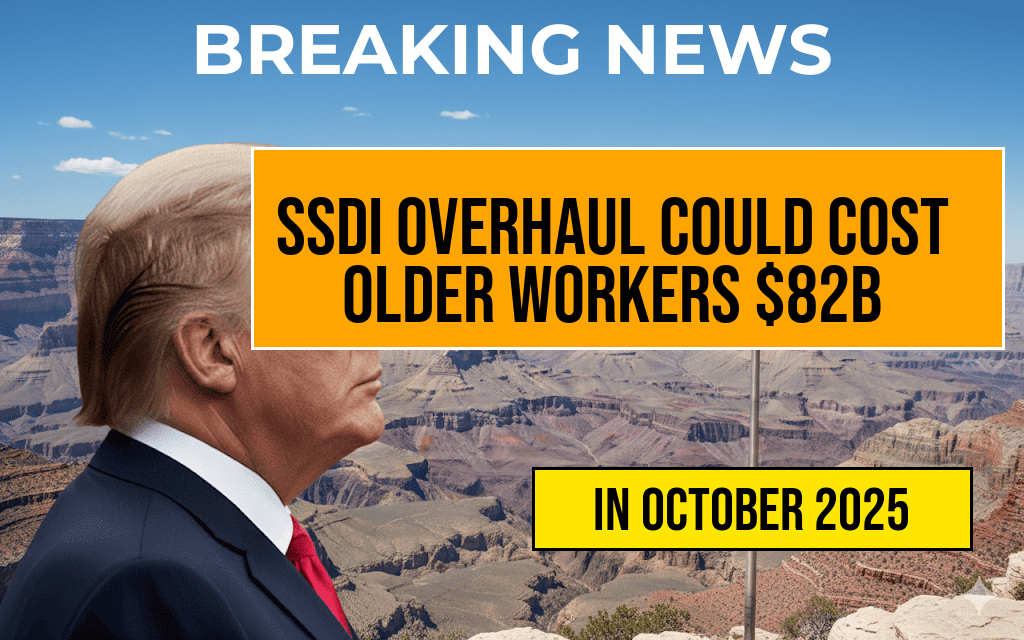The future of the Social Security Disability Insurance (SSDI) program may be at a crossroads, as proposed changes could lead to an estimated loss of $82 billion for older workers over the next decade. These potential reforms aim to address the program’s financial sustainability but have raised concerns about their implications for the most vulnerable populations. Advocates for older workers argue that any overhaul should protect their benefits, while policymakers grapple with the need for systemic reform. As discussions unfold, many stakeholders are advocating for a balanced approach that considers both the program’s longevity and the economic security of its beneficiaries.
Understanding SSDI and Its Importance
SSDI is a crucial program that provides financial assistance to individuals who are unable to work due to disabilities. Established in 1956, it serves millions of Americans, particularly older workers who may face higher risks of disability. The program is primarily funded through payroll taxes and is designed to offer a safety net for those who have contributed to the workforce but are now unable to support themselves.
Proposed Changes to SSDI
Current proposals for SSDI reform include measures aimed at tightening eligibility requirements and modifying benefit calculations. While these changes are seen as necessary to ensure the program’s viability, they have sparked a heated debate among lawmakers, disability advocates, and older workers.
- Eligibility Criteria: Stricter guidelines may be introduced to determine who qualifies for benefits, potentially excluding many older workers who have legitimate disabilities.
- Benefit Calculations: Adjustments to how benefits are calculated could result in lower payouts for those who depend on SSDI, further straining their financial situations.
Economic Impact on Older Workers
Analyses indicate that older workers stand to lose significantly under the proposed reforms. The projected $82 billion loss underscores the potential ramifications for this demographic, many of whom rely heavily on SSDI as a primary source of income. Financial experts warn that reducing benefits could lead to increased poverty rates among older adults, as they face unique challenges such as health care costs and limited employment opportunities.
Advocacy and Responses
In response to the proposed SSDI changes, various advocacy groups have mobilized to protect the interests of older workers. Organizations like the National Organization of Social Security Claimants’ Representatives (NOSSCR) and the AARP have voiced their concerns, emphasizing the need for careful consideration of any reforms that could disproportionately affect vulnerable populations.
- Public Awareness: Advocacy groups are ramping up efforts to inform the public and policymakers about the potential consequences of SSDI changes.
- Legislative Action: Some legislators are introducing bills aimed at safeguarding SSDI benefits for older workers while still pursuing necessary reforms.
Looking Ahead
The discussions surrounding SSDI reforms are ongoing, with various stakeholders pushing for solutions that balance sustainability with the needs of beneficiaries. As Congress debates the future of this vital program, the outcome will have lasting implications for millions of older Americans who rely on SSDI for their livelihoods.
Key Takeaways
| Year | Projected Loss ($ Billion) |
|---|---|
| 2024 | 8.2 |
| 2025 | 8.4 |
| 2026 | 8.6 |
| 2027 | 8.8 |
| 2028 | 9.0 |
| 2029 | 9.2 |
| 2030 | 9.4 |
| 2031 | 9.6 |
| 2032 | 9.8 |
| 2033 | 10.0 |
The potential overhaul of the SSDI program is a complex issue that requires careful thought and consideration. Stakeholders from various sectors must engage in constructive dialogue to ensure that any changes made will support the program’s sustainability while safeguarding the welfare of older workers who depend on it. For more information on SSDI and its implications, visit Social Security Administration or read about the ongoing debates at Forbes.
Frequently Asked Questions
What is the potential impact of the SSDI overhaul on older workers?
The potential overhaul of the SSDI (Social Security Disability Insurance) program may result in an estimated $82 billion loss for older workers, affecting their financial stability and access to benefits.
Why are older workers specifically mentioned in the SSDI overhaul discussion?
Older workers are highlighted because they are more likely to rely on SSDI benefits as they face unique challenges related to age and employment, making changes to the program particularly impactful for them.
What are the proposed changes in the SSDI program?
The proposed changes in the SSDI program aim to streamline processes and reduce costs, but may inadvertently lead to decreased benefits for older workers who depend on this support.
How might the $82 billion loss affect the economy?
A loss of $82 billion in benefits for older workers could have significant ripple effects on the economy, potentially reducing consumer spending and increasing financial insecurity among this demographic.
What can older workers do to prepare for potential changes to SSDI?
Older workers should stay informed about the potential changes to SSDI and consider consulting financial advisors to explore alternative income sources and prepare for possible reductions in benefits.













